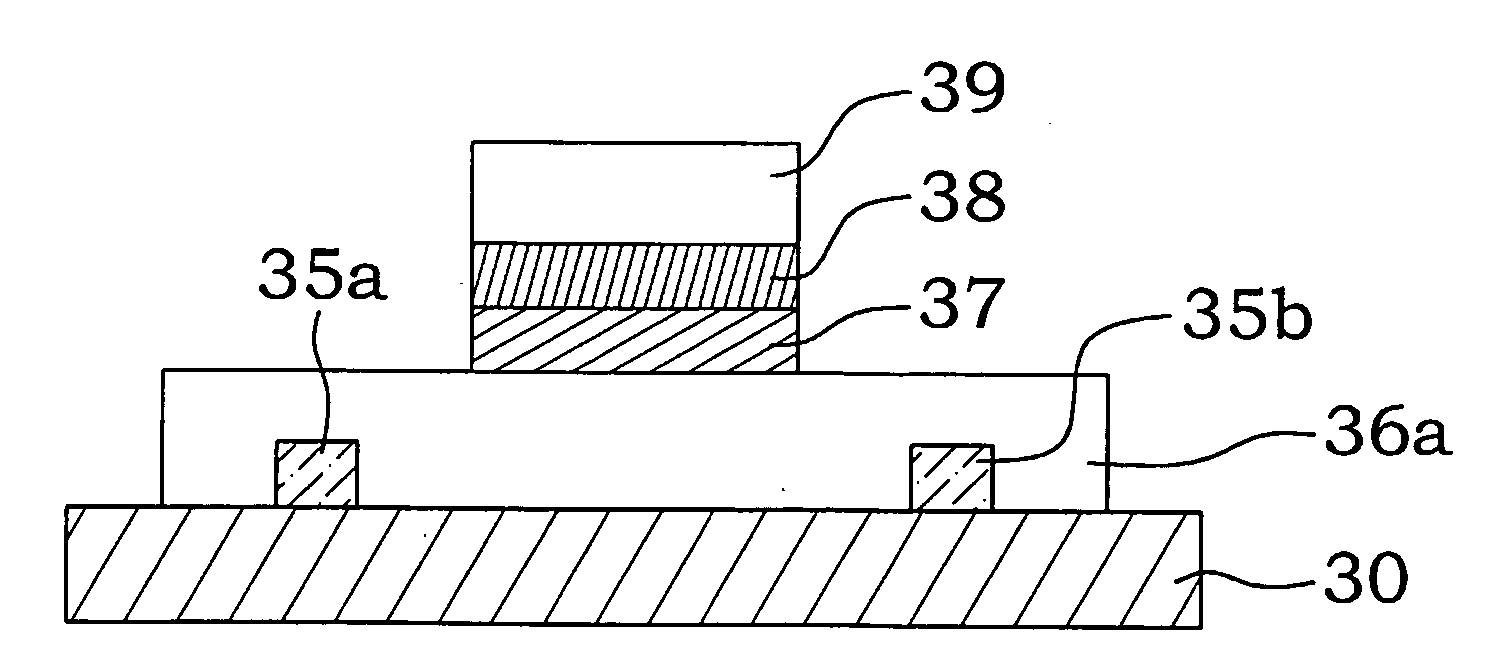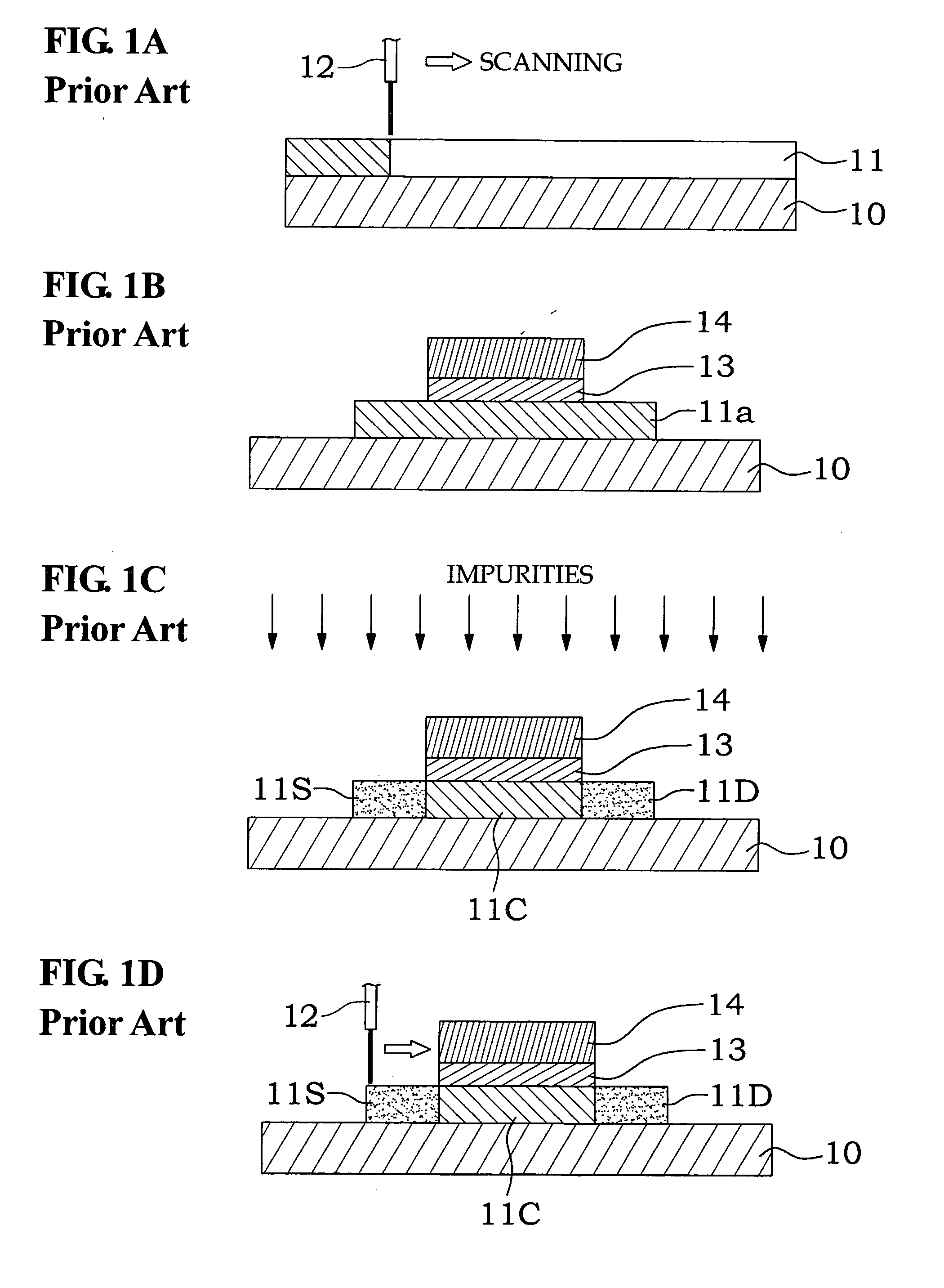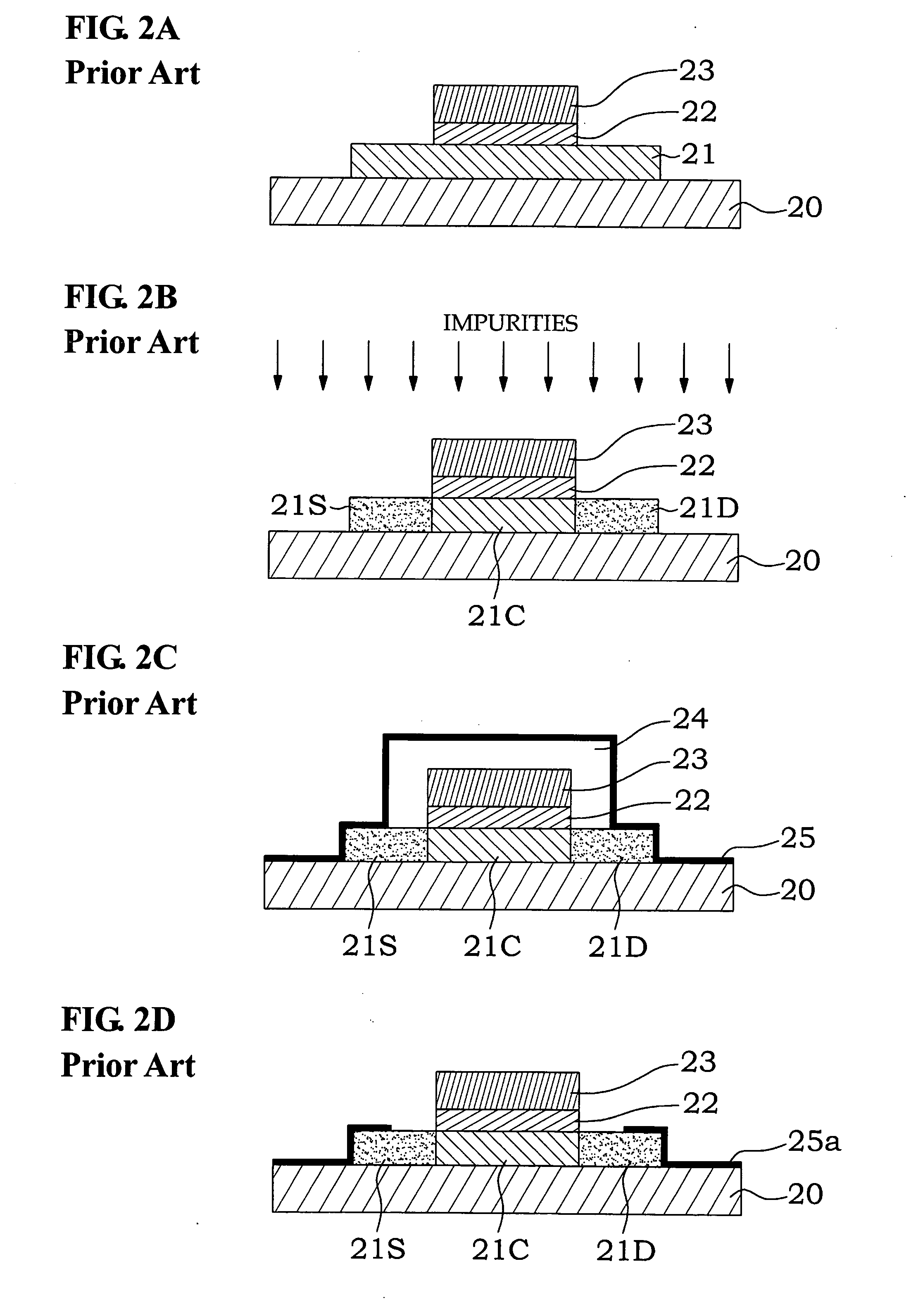Method for crystallizing amorphous semiconductor thin film by epitaxial growth using non-metal seed and method for fabricating poly-crystalline thin film transistor using the same
a technology of amorphous semiconductors and crystallization methods, which is applied in the direction of semiconductor devices, electrical equipment, basic electric elements, etc., can solve the problems of deteriorating electrical characteristics of thin film transistors, surface roughness and crystallization uniformity, and fundamental problems that have not been solved, so as to remove the source of metal pollution and improve the characteristics of semiconductor devices
- Summary
- Abstract
- Description
- Claims
- Application Information
AI Technical Summary
Benefits of technology
Problems solved by technology
Method used
Image
Examples
first embodiment
[0052] In this case, the contact mask which is essentially used for fabricating a thin film transistor (TFT) has been used in order to form the pair of island-type metal patterns 33a and 33b in the However, it is possible to form island-type metal patterns having patterns and formatting positions differing from the other embodiments in which a pair of island-type metal patterns 33a and 33b are directly deposited on an amorphous silicon thin film 31 using a separate hard mask on which holes corresponding to the pair of island-type metal patterns 33a and 33b are formed.
[0053] Also, it is also possible to form a pair of island-type metal patterns 33a and 33b in which a desired patterned photoresist pattern is formed on the crystallization induced metal film 32 according to a well-known patterning method, and the photoresist pattern is used as a mask.
[0054] Then, the amorphous silicon thin film 31 is dry-etched or wet-etched, using the island-type metal patterns 33a and 33b as an etch...
second embodiment
[0076]FIG. 6 is a graph illustrating transfer characteristics of an N-type poly-crystalline thin film transistor fabricated by the conventional metal induced lateral crystallization (MILC) method and an N-type poly-crystalline thin film transistor fabricated by the present invention.
[0077] In the case that a drain voltage is 10V as shown in FIG. 6, an on-current is 5.2×10−5 A at a gate voltage of 20V for a thin film transistor fabricated by the conventional MILC method, and an off-current is 8.7×10−8 A at a gate voltage of −5V. Meanwhile, if a non-metal seed epitaxial growth (NSEG) method according to the second embodiment of the present invention is applied, an on-current is increased into 2.1×10−4 A and an off-current is decreased into 1.2×10−8 A. Also, in the case of the conventional MILC method, an electron mobility is eleven (11), while a thin film transistor fabricated by a NSEG method has a high electron mobility of about forty-seven (47).
[0078] This means that the N-type th...
third embodiment
[0084] Meanwhile, in the case of the crystallization method using the NSEG according to the present invention, it is possible to change a process so that an amorphous silicon thin film is crystallized in advance using seeds, and then all the post-processes such as formation of a gate insulation film and a gate metal film are performed. The case that an amorphous silicon film is crystallized in advance has a merit that prevents a silicon-oxide film interface characteristic from worsening due to reduction in volume of silicon at the time of crystallizing the amorphous silicon after forming the gate insulation film and the gate electrode. This will be described according to the following third embodiment of the present invention.
[0085]FIGS. 7A through 7E are cross-sectional views for explaining a method of fabricating an N-type thin film transistor according to a third preferred embodiment of the present invention.
[0086] Referring to FIG. 7A, non-metal seeds 71a and 71b are formed on ...
PUM
| Property | Measurement | Unit |
|---|---|---|
| temperature | aaaaa | aaaaa |
| temperature | aaaaa | aaaaa |
| temperature | aaaaa | aaaaa |
Abstract
Description
Claims
Application Information
 Login to View More
Login to View More - R&D
- Intellectual Property
- Life Sciences
- Materials
- Tech Scout
- Unparalleled Data Quality
- Higher Quality Content
- 60% Fewer Hallucinations
Browse by: Latest US Patents, China's latest patents, Technical Efficacy Thesaurus, Application Domain, Technology Topic, Popular Technical Reports.
© 2025 PatSnap. All rights reserved.Legal|Privacy policy|Modern Slavery Act Transparency Statement|Sitemap|About US| Contact US: help@patsnap.com



